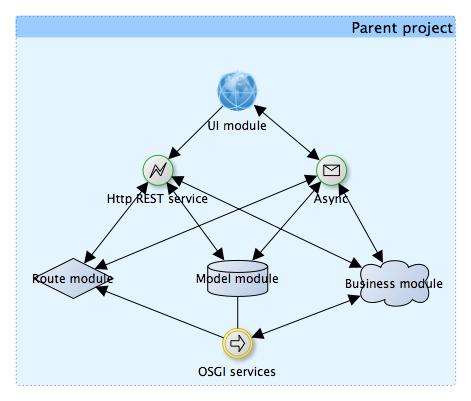Overview
- Database persistence with transaction management
- Testable and smoother business code with out of the box functional programming, integration tests, shortened syntax, as well as messaging and http REST call at all levels.
- Routing support allowing you to split; aggregate, transform your messages and redirect to the according services.
- Ease deployment with hot swap support, multiple versions of the same bundle support, full application specification.
Architecture

Reference samples
- The client listens to newly posted messages (Websocket)
- It has an input allowing you to post message
- The message is then sent in JSON, transformed in Xml and resent to a ‘business’ REST web service
- This business service validates it and save it in a database
- The answer is sent back in a route which is put back in the event queue